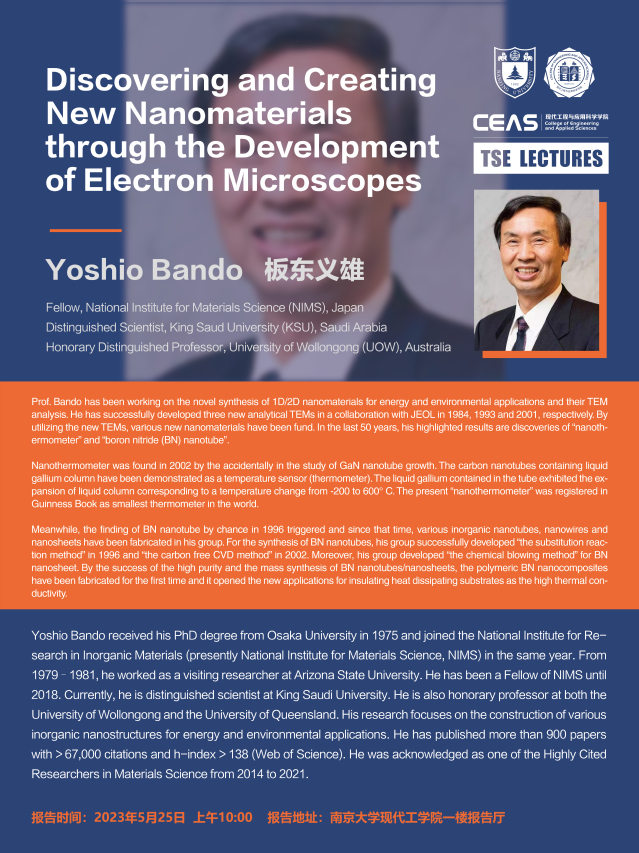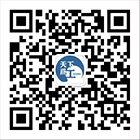我们有幸邀请到沙特国王大学Yoshio Bando教授,作为 TSE Lectures 系列讲座的嘉宾。报告信息见下,欢迎各位老师和同学参加!
时间:2023年 5月25日 上午10:00
地点:Betway必威西汉姆联一楼报告厅
联系人:王学斌教授 Email:wangxb@nju.edu.cn
题目:Discovering and Creating New Nanomaterials through the Development of Electron Microscopes
报告摘要:
Prof. Bando has been working on the novel synthesis of 1D/2D nanomaterials for energy and environmental applications and their TEM analysis. He has successfully developed three new analytical TEMs in a collaboration with JEOL in 1984, 1993 and 2001, respectively. By utilizing the new TEMs, various new nanomaterials have been fund. In the last 50 years, his highlighted results are discoveries of “nanothermometer” and “boron nitride (BN) nanotube”.
Nanothermometer was found in 2002 by the accidentally in the study of GaN nanotube growth. The carbon nanotubes containing liquid gallium column have been demonstrated as a temperature sensor (thermometer). The liquid gallium contained in the tube exhibited the expansion of liquid column corresponding to a temperature change from -200 to 600° C. The present “nanothermometer” was registered in Guinness Book as smallest thermometer in the world.
Meanwhile, the finding of BN nanotube by chance in 1996 triggered and since that time, various inorganic nanotubes, nanowires and nanosheets have been fabricated in his group. For the synthesis of BN nanotubes, his group successfully developed “the substitution reaction method” in 1996 and “the carbon free CVD method” in 2002. Moreover, his group developed “the chemical blowing method” for BN nanosheet. By the success of the high purity and the mass synthesis of BN nanotubes/nanosheets, the polymeric BN nanocomposites have been fabricated for the first time and it opened the new applications for insulating heat dissipating substrates as the high thermal conductivity.
报告人简介:
Yoshio Bando received his PhD degree from Osaka University in 1975 and joined the National Institute for Research in Inorganic Materials (presently National Institute for Materials Science, NIMS) in the same year. From 1979–1981, he worked as a visiting researcher at Arizona State University. He has been a Fellow of NIMS until 2018. Currently, he is distinguished scientist at King Saudi University. He is also honorary professor at both the University of Wollongong and the University of Queensland. His research focuses on the construction of various inorganic nanostructures for energy and environmental applications. He has published more than 900 papers with > 67,000 citations and h-index > 138 (Web of Science). He was acknowledged as one of the Highly Cited Researchers in Materials Science from 2014 to 2021.



